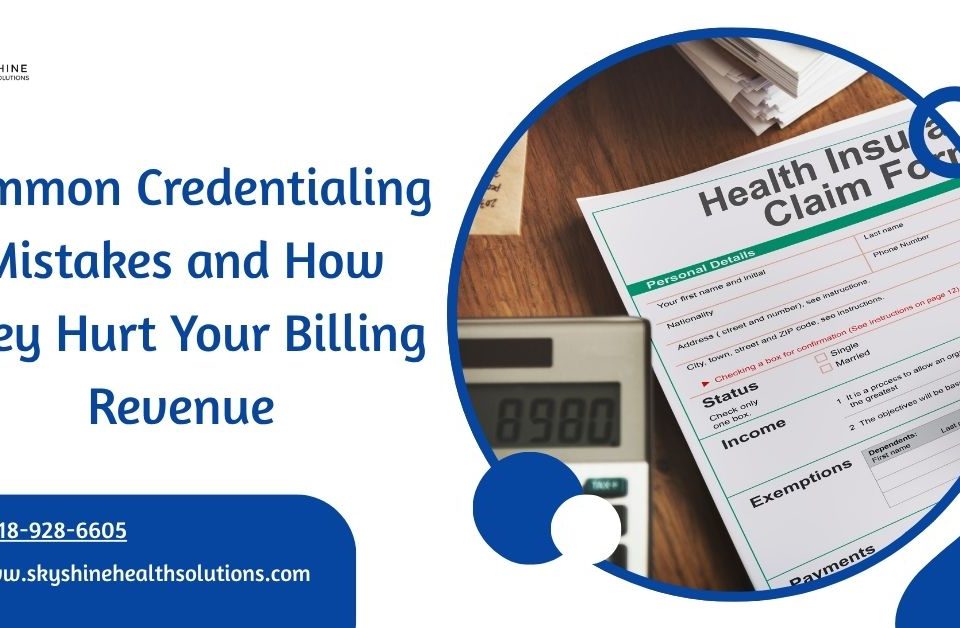
Medical Billing Process: Step-by-Step Guide
May 26, 2025
EOB (Explanation of Benefits): How to Read It and Why It Matters in Medical Billing
May 27, 2025If you’ve worked in medical billing or managed a healthcare practice, you know the challenge to handle insurance rejections and denials in billing, which occur frequently. However, the good news is that with the right approach, you can effectively handle insurance rejections and denials to secure payments. In this post, we’ll explore:
-
-
- What denials and rejections are (and why they differ)
- Why they occur
- Most importantly, how to handle them like a pro
Whether you’re new to billing or need a refresher, this guide will help you turn “Nope, not paying” into “Paid in full.”
-
Rejection vs. Denial: What’s the Difference?
To begin, let’s clarify these terms, as they’re often confused but aren’t interchangeable.
Claim Rejection
A rejection means the claim didn’t process through the insurance system. For instance, a typo in a patient ID or name might be the issue.
Curable? Yes.
Next step? Correct the error and resubmit.
Claim Denial
In contrast, a denial means the claim was processed but rejected. This often occurs because:
-
-
- The service isn’t covered
- Prior authorization wasn’t obtained
- The code doesn’t match the diagnosis
Repairable? In many cases, yes—with a strong appeal.
What’s next? Investigate, fix, and resubmit or appeal.
-
Why Do Insurance Denials Occur?
To understand denials, consider these common reasons claims are rejected or denied:
How to Deal with Denials and Rejections
Follow these steps to turn denied claims into paid ones.
1. Know the Problem Quickly
When a claim is rejected or denied, don’t ignore it or assume it’s final.
Instead:
-
-
- Review the Explanation of Benefits (EOB) or Electronic Remittance Advice (ERA)
- Identify the reason and denial code
-
2. Fix and Resubmit Rejected Claims
If it’s a rejection (e.g., a typo in the patient’s name), correct the error in your billing system and refile. As a result, no appeal is needed—just a clean resubmission.
3. Appeal Denied Claims
If the claim was denied:
-
-
- Analyze the denial reason
- Gather supporting documents (e.g., provider notes, prior authorization, corrected coding)
- Write a clear, professional appeal letter
- Include the revised claim and attachments
Thus, a well-prepared appeal can overturn the denial.
-
4. Move Fast — There’s a Deadline
Because most payers have strict appeal deadlines (sometimes 30–45 days), act quickly. For example, set reminders or use denial tracking tools to stay on top of deadlines.
5. Track Denials Like a Hawk
If you notice recurring denials (e.g., for missing modifiers or incorrect codes), address the root cause. Consider:
-
-
- Staff training
- Workflow improvements
- Better pre-visit checks
- Regular internal audits
Consequently, proactive fixes reduce future denials.
-
6. Communicate with the Patient
When a patient faces a balance due to a non-covered claim, be transparent. For instance:
-
-
- Explain the issue in simple terms
- Help them understand appeal options
- Offer payment plans if needed
As a result, clear communication builds trust.
-
Tips to Avoid Denials in the First Place
Since prevention is better than correction, here’s how to minimize denials:
-
-
- Verify insurance before each visit
- Ensure coverage is active and current
- Obtain authorizations in advance
- Train staff on accurate coding and documentation
- Stay updated with payer regulations and coding changes
- Monitor denial patterns and act promptly
By implementing these steps, you’ll reduce errors significantly.
-
Last Words: Denials Don’t Have to Be a Dead End
Ultimately, insurance denials and rejections are part of medical billing, but they’re not the end of the road. By equipping yourself with the right tools, processes, and mindset, you can tackle them confidently, recover lost revenue, and strengthen your billing system. Moreover, each denial is a chance to learn, improve, and get paid.

Learn more on Insurance Claims: Top Reasons They Get Denied – How to Prevent Them
For more detail, visit Skyshine Health Solutions















